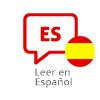Mycotoxins are contaminants produced by filamentous fungi that can be found throughout the food production chain. The main mycotoxigenic fungi are from the genera Aspergillus, Penicillium and Fusarium.![]() Their presence represents economic losses for poultry producers due to the damage they cause to animal health and their impact on production parameters, which is reflected in increased production costs.
Their presence represents economic losses for poultry producers due to the damage they cause to animal health and their impact on production parameters, which is reflected in increased production costs.
Prevention and control of these toxins is difficult because the development of these fungi and the production of mycotoxins are influenced by different factors, among which we can mention1,2,3: In order for mycotoxicosis to occur, in addition to the presence of the toxin, other factors must be taken into account, such as the characteristics of the toxin and the contaminated substrate, the duration of exposure, the amount and composition of the substrate, as well as the physiological characteristics of the animals and the productive and sanitary characteristics of the company.
![]() Substrate composition and percentage (e.g. corn)
Substrate composition and percentage (e.g. corn)![]() Availability of nutrients for fungal growth
Availability of nutrients for fungal growth![]() Fungal species
Fungal species![]() Existence of several fungi in the same substrate
Existence of several fungi in the same substrate![]() Water activity (aw)
Water activity (aw)![]() pH
pH![]() Environmental factors such as temperature and humidity
Environmental factors such as temperature and humidity![]() Climate change
Climate change

Mycotoxicosis can be acute or chronic:
ACUTE INTOXICATION Acute intoxication is caused by the consumption of high levels of mycotoxins in short periods of time, with abrupt and significant changes in the productive parameters of the animals. CHRONIC INTOXICATION Chronic intoxication occurs when low levels are consumed for long periods of time, representing a greater risk due to its higher prevalence and the great economic impact on companies. This is because they cause4,5:
![]() Intestinal health damage
Intestinal health damage![]() Suppression and inadequate immune response
Suppression and inadequate immune response![]() Decreased resistance to diseases
Decreased resistance to diseases![]() Reduced nutrient absorption
Reduced nutrient absorption![]() Presentation of dysbiosis
Presentation of dysbiosis![]() Alterations in production parameters such as weight gain, feed consumption, feed conversion, laying rate, fertility rate, and flock uniformity
Alterations in production parameters such as weight gain, feed consumption, feed conversion, laying rate, fertility rate, and flock uniformity
What are free radicals and oxidative stress?
A free radical is a molecule that has structurally unpaired electrons, making it highly reactive which can lead to the generation of other free radicals. Among the most well-known free radicals are reactive oxygen species (ROS). ROS production originates as part of physiological metabolism in humans and animals, fulfilling important functions such as the regulation of homeostasis processes and cell signaling. An enzymatic system of endogenous antioxidants balances and prevents damage caused by the presence of free radicals such as ROS. This system is composed of: Moderate levels of ROS regulate physiological and cellular functions, but high concentrations produce cellular oxidative stress and biochemical instability6,7.
Moderate levels of ROS regulate physiological and cellular functions, but high concentrations produce cellular oxidative stress and biochemical instability6,7.
 Oxidative stress is considered to be the imbalance between free radicals and antioxidant enzymes in the animal’s organism, causing protein oxidation, lipid peroxidation and effects on DNA that result in cellular and degenerative damage9.
Oxidative stress is considered to be the imbalance between free radicals and antioxidant enzymes in the animal’s organism, causing protein oxidation, lipid peroxidation and effects on DNA that result in cellular and degenerative damage9.
Mycotoxins as oxidative drivers of oxidative stress The effect of mycotoxins has been extensively studied:
![]() They cause damage at the cellular level.
They cause damage at the cellular level.![]() They alter the synthesis and structure of DNA and RNA.
They alter the synthesis and structure of DNA and RNA.![]() They are carcinogenic, hepatotoxic, nephrotoxic, teratogenic, estrogenic, immunotoxic and mutagenic5,10,11.
They are carcinogenic, hepatotoxic, nephrotoxic, teratogenic, estrogenic, immunotoxic and mutagenic5,10,11.
Figure 1. Oxidative damage associated with prolonged exposure to low doses of mycotoxins (Adapted from Malvandi, et al., 2022). Aflatoxins
Among the main mycotoxins, aflatoxins (AF) are worth mentioning. Poultry affected with aflatoxicosis present, mainly, liver lesions and lower size and body weight due to the difficulty to metabolize fatty acids and due to the decrease in protein production. Along with liver damage, immunosuppression and increased blood clotting time are also present, and bloody lesions may be observed in the cavities and mucous membranes5. As a consequence of oxidative stress caused by aflatoxins, mitochondrial and DNA damage is observed, as well as apoptosis-induced cell destruction.![]() It has been reported that AFB1 intoxication in chickens negatively affects the regulation of antioxidant enzymes such as SOD, GSH-Px and CAT, as well as increasing the by-products of lipid peroxidation, such as malondialdehyde (MDA), and decreasing the levels of the non-enzymatic antioxidant GSH5,12.
It has been reported that AFB1 intoxication in chickens negatively affects the regulation of antioxidant enzymes such as SOD, GSH-Px and CAT, as well as increasing the by-products of lipid peroxidation, such as malondialdehyde (MDA), and decreasing the levels of the non-enzymatic antioxidant GSH5,12.
Ochratoxin
Ochratoxin A (OTA) is passively absorbed in the gastrointestinal tract and enters the bloodstream, reaching the kidneys and potentially being distributed to other organs such as muscle, liver and adipose tissue. This process has a negative effect on the immune system: In addition, it is related to a decrease in food consumption and growth rate, and nervous signs of varying intensities may be observed.![]() This mycotoxin causes the production of ROS with subsequent oxidative stress, which occurs mainly in the kidneys.
This mycotoxin causes the production of ROS with subsequent oxidative stress, which occurs mainly in the kidneys.
![]() Altering the production of cytokines, such as tumor necrosis factor alpha and interleukin 6.
Altering the production of cytokines, such as tumor necrosis factor alpha and interleukin 6.![]() Increasing susceptibility to bacteria.
Increasing susceptibility to bacteria.![]() Causing atrophy of lymphoid organs, such as the thymus, spleen and lymph nodes.
Causing atrophy of lymphoid organs, such as the thymus, spleen and lymph nodes.![]() Promoting inadequate production of antibodies.
Promoting inadequate production of antibodies.
Fumonisins
Fumonisins (FUM) mainly contaminate cereals such as corn and can be found free or bound to grain constituents (hidden mycotoxins)5. The absorption of FUM through the gastrointestinal tract is poor (≤ 4%). Subsequently, they are eliminated in the feces, although a part of them is retained in the liver and kidneys, increasing oxidative DNA damage and causing apoptosis, mitosis and lipid peroxidation in rat liver and spleen mononuclear cells. The presence of FUM causes immune damage that favors the presentation and increase in the severity of infectious processes and interferes with the vaccinal response, affecting the lymphoid organs and potentially causing atrophy of the bursa of Fabricius.![]() In addition, FUM promote the development of dysbiosis and higher endotoxin concentrations, which, together with oxidative stress of intestinal cells, negatively affect nutrient absorption.
In addition, FUM promote the development of dysbiosis and higher endotoxin concentrations, which, together with oxidative stress of intestinal cells, negatively affect nutrient absorption.
Zearalenone Zearalenone (ZEN) is an estrogenic mycotoxin due to its estrogen-like molecular structure, competing with estrogen receptors.
After absorption, ZEN is metabolized in the liver, although it has also been reported to be metabolized in other organs such as lung, kidney and intestine. The effect of ZEN varies depending on the animal species. Among poultry, turkeys are most sensitive because they biotransform ZEN to α-zearalenol (α-ZOL) which is approximately three times more estrogenic than β-zearalenol (β-ZOL). Some studies have shown that exposure to this toxin causes reproductive, renal, hepatic and immunological damage5. Broilers consuming diets containing 7.9 mg/kg ZEN showed increased GPx activity in renal tissue and the presence of oxidative stress13.
Trichothecenes The main trichothecenes are: These mycotoxins cause damage by inhibiting protein synthesis and interfering with DNA and RNA synthesis in broilers, resulting in damage to the digestive tract, as well as liver, nerve and immune damage, which is reflected in low antibody titers to the vaccine against Newcastle disease virus and infectious bronchitis5. In addition, they affect programmed cell death and the relative weight of lymphoid organs. It has also been reported that HT-2 and T-2 intoxication induces an increase in GSH-Px, CAT, SOD and MDA. Use of additives to mitigate the effect of oxidative stress in poultry
![]() T-2 toxin
T-2 toxin![]() HT-2 toxin
HT-2 toxin![]() Diacetoxyscirpenol (DAS)
Diacetoxyscirpenol (DAS)![]() Deoxynivalenol (DON)
Deoxynivalenol (DON)![]() Fusarenon
Fusarenon![]() Nivalenol
Nivalenol
The negative impact of mycotoxins on the immune system and their relationship with oxidative stress has generated interest in the search for alternatives to prevent and reduce the impact on the health and productivity of poultry. Preventive measures should be established taking into account the characteristics of the mycotoxin involved, for which it is necessary to perform reliable and validated analytical tests to determine the level of contamination and the presence of multi-contamination.![]() On the other hand, the target organ, age of the birds, productive stage, sanitary status of the company, storage time of the input, percentage of damaged grains, etc. must be evaluated.
On the other hand, the target organ, age of the birds, productive stage, sanitary status of the company, storage time of the input, percentage of damaged grains, etc. must be evaluated.
Antioxidantas
Antioxidants reduce the amount of oxidizing molecules (free radicals) by donating their own electron to stabilize free radicals, converting them into non-reactive compounds, thus minimizing the harmful effects caused in cells by these radicals. In this regard, antioxidants play an important role as a protective mechanism against oxidative damage generated by mycotoxins. 
Among the main components that have been studied in poultry for mycotoxicosis are vitamins C, E and A, which have been shown to reduce oxidative stress and cell death due to mycotoxins. It has also been reported that plant derivatives generally reduce binding to target organs by improving metabolic function or by counteracting the stress state of the animal. ⇰ Among the most studied are silymarin, crocin, cynara, taraxasterol, turmeric, lycopene, acai polyphenols. Some of them are used concomitantly with enriched yeast and selenium.
The main properties described for these compounds include:
![]() Anti-inflammatory effects.
Anti-inflammatory effects.![]() Liver protection.
Liver protection.![]() Free radical removal.
Free radical removal.![]() Interaction with the oxidative cascade.
Interaction with the oxidative cascade.![]() Extinction of ROS.
Extinction of ROS.![]() Inhibition of oxidative enzymes.
Inhibition of oxidative enzymes.![]() Chelation of metal ions.
Chelation of metal ions.
CONCLUSIONS One of the main adverse effects of mycotoxins is the generation of free radicals that cause oxidative stress with the consequent cellular damage and alteration of physiological processes that affect animal health and productivity. Currently, several antimycotoxin products are available on the market that, based on conventional adsorbents, have been reinforced with vitamins, plant compounds, enzymes and minerals that have shown different levels of effectiveness against mycotoxicosis. REFERENCES 1. Marin, S., et al. 2013. Mycotoxins: occurrence, toxicology, and exposure assessment. Food Chem Toxicol 60: 218-237. 2. Abidin Z., et al. 2011. Mycotoxins in broilers: pathological alterations induced by aflatoxins and ochratoxins, diagnosis and determination, treatment and control of mycotoxicosis World’s Poultry Sc. J. 67: 485-496. 3. Kos, J., et al.; 2023. Climate change—A global threat resulting in increasing mycotoxin occurrence. Foods 12: 2704. https://doi.org/10.3390/foods12142704 4. Dilkin, P. and Mallmann, C.A. 2004. Sinais clínicos e lesões causadas por micotoxinas. Anais do XI Encontro Nacional de Micotoxinas, 30/06 a 02/07 2004. Realizado em Piracicaba – SP, Universidade de São Paulo Escola Superior de Agricultura Luiz de Queiroz. 5. Dilkin, P. 2021. Micotoxinas em aves. 1st Ed.; Ed. Palloti, Santa Maria Brasil, 304 p. 6. E.O. da Silva et al. 2017. Mycotoxins and oxidative stress: where are we?. World Mycotoxin Journal. 11 (1): 113-133. 7. Checa, J.J. and Aran M. 2020. Reactive oxygen species: drivers of physiological and pathological processes. J. Inflamm. Res., 13: 1057-1073 8. Surai P.F. 2016. Antioxidant systems in poultry biology: Superoxide dismutase. J. Anim. Res. Nutr., 1: 1-8 9. Manisha, W., et al. 2017. Review article: oxidative stress and antioxidants: an overview. IJARR. 2 (9): 110-119 10. da Rocha, M.E., et al. 2014. Mycotoxins and their effects on human and animal health. Food Control. 36(1): 159-165. https://doi.org/10.1016/j.foodcont.2013.08.021. 11. Gao, J., et al. 2010. Vitamin E supplementation alleviates the oxidative stress induced by dexamethasone treatment and improves meat quality in broiler chickens. Poultry science 89: 318- 327. 12. Yuhan Wang, Y., et al. 2023. Aflatoxin B1 in poultry liver: Toxic mechanism. Toxicon. 233: 107262. https://doi.org/10.1016/j.toxicon.2023.107262. 13. Borutova R., et al. 2008. Effects of deoxynivalenol and zearalenone on oxidative stress and blood phagocytic activity in broilers. Arch. Anim. Nutr. 62:303–312. doi: 10.1080/17450390802190292. 14. Galli, G.M. et al. 2020. Feed contaminated by fumonisin (Fusarium spp.) in chicks has a negative influence on oxidative stress and performance, and the inclusion of curcumin-loaded nanocapsules minimizes these effects. Microbial Pathogenesis. 148. https://doi.org/10.1016/j.micpath.2020.104496. 15. Armanini, E., et al. 2021. Protective effects of silymarin in broiler feed contaminated by mycotoxins: growth performance, meat antioxidant status, and fatty acid profiles. Tropical Animal Health and Production. 53: 442 DOI: 10.1007/s11250-021-02873-2 16. Xiao, Y., et al. 2019. Protective effects of selenium against zearalenone-induced apoptosis in chicken spleen lymphocyte via an endo plasmic reticulum stress signaling pathway. Cell Stress Chaperones. 24(1): 77e89. doi: 10.1007/s12192-018-0943-9![]() The animal organism, by means of enzyme complexes, seeks a balance between free radicals and these enzyme complexes.
The animal organism, by means of enzyme complexes, seeks a balance between free radicals and these enzyme complexes.




 Micotoxicosis prevention
Micotoxicosis prevention